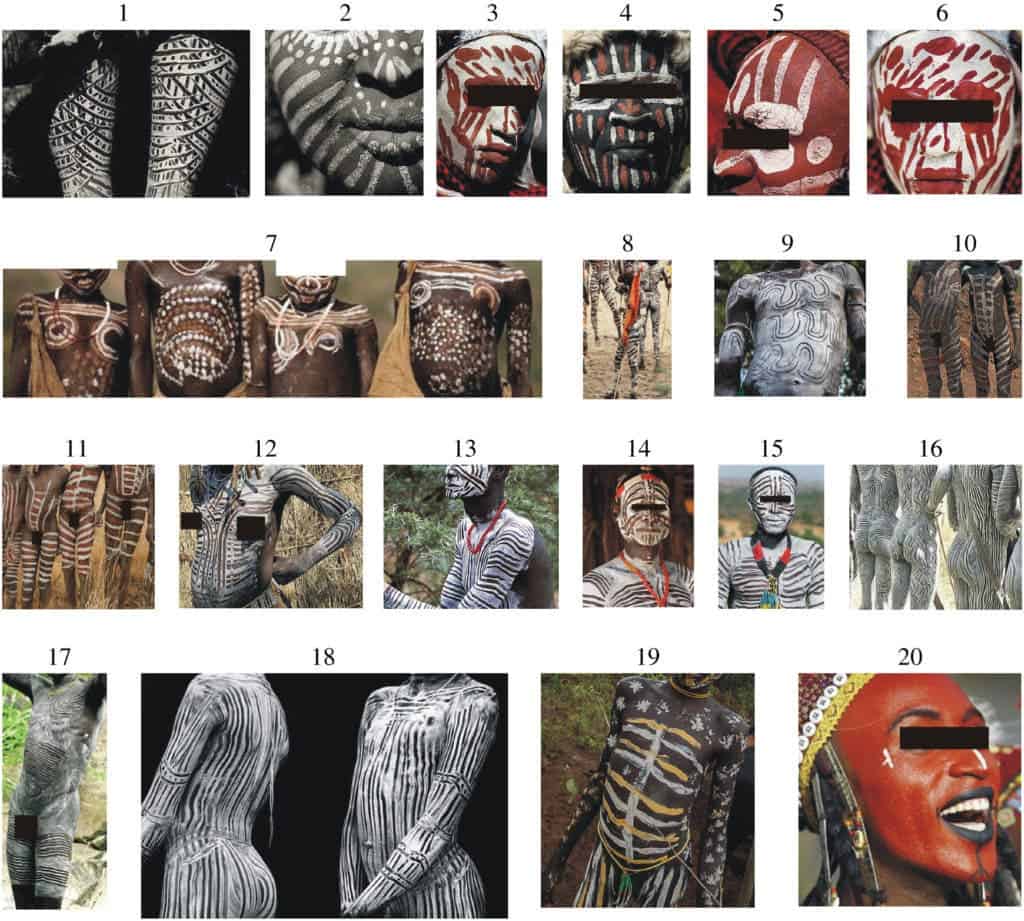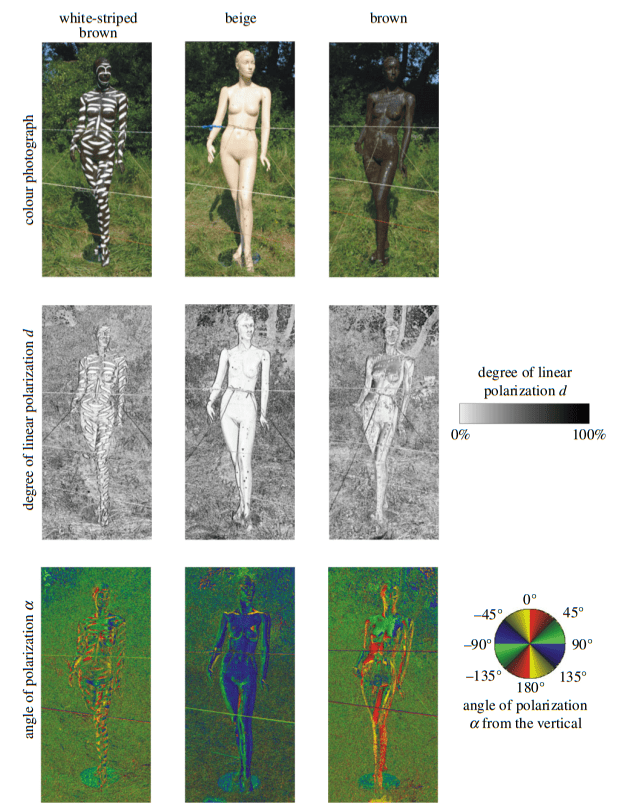Zebra-like striped body paint patterns can reduce the number of horsefly bites a person receives by up to 10 times, new research revealed. While this isn’t their explicit purpose in indigenous communities, such tattoos can be seen as an “adaptation to the environment,” says the study’s first author.

A selection of typical body painting styles from different African tribes.
Image credits Horvath et al., 2019, RSOS.
Indigenous tribes from Africa, Australia, and southeast Asia have old and rich bodypainting traditions. Such traditions have been enshrined as central cultural components in their respective communities for generations. White, gray, bright yellow, or beige paints — customarily mixed from materials such as clay, ash, chalk, or cattle dung — are applied during specific ceremonies on the bodies of tribesmen and women.
Such patterns serve individuals “as body decoration, for emotional expression, or as marks to signify personal identity and/or group affiliation,” the team writes. It’s also possible that the bright pigments — which reflect incoming light — help with temperature regulation in the blistering sun of the savanna and other similar areas. However, it may also help protect them from biting insects.
Previous research with zebras has shown that horseflies (family Tabanidae), potentially-dangerous blood-sucking insects, tend to avoid the stripe-patterned animals. The team wanted to check if similar tribal tattoo patterns would have a similar effect.
For the study, the team worked with three mannequins, just like the ones you’d see in a clothing store. One of the mannequins had dark skin, another light skin, and the third one was painted in a dark color with white stripes. Each mannequin received a coat of adhesive and was then deployed in a meadow in Hungary for eight weeks of summer. The team chose this location because ‘numerous horsefly species’ buzz around in Hungary during the summer.

The mannequins used in the study seen in reflected/normal light (top row) and polarized light (middle, bottom row).
Image credits Horvath et al., 2019, RSOS.
After the study period, the team counted how many horseflies and other biting insects each mannequin collected. All in all, the team reports, the dark-skinned one had 10 times more horseflies stuck to it than the striped one, and twice as many as the light-skinned dummy. This likely comes down to how the horseflies (and other insects) perceive the patterns. The stripes may disrupt the polarisation of light reflected from the tribespeople’s bodies, making insects believe they’re not looking at a person at all.
“Traditional bodypaintings with their typical white-striped patterns on a brown body surface have the advantage of deterring blood-sucking horseflies as these patterns are unattractive to these parasitic insects,” the study reads.
Horsefly bites are not only irritating, they’re also very dangerous. The insects can transmit a host of potentially-deadly diseases as they suck on a host’s blood.
Because horseflies lay their larvae in ponds and lakes, indigenous people often come into contact with them when retrieving water. Gabor Horvath from the Department of Biological Physics at Hungary’s Eotvos Lorand University, and paper lead-author, told AFP that the patterns aren’t meant to repel the insects. Such tattoos carry cultural significance, but, luckily, they also happen to be good at confusing insects such as horseflies.
“We are however convinced that these people know well the horsefly-repelling characteristic of their bodypaintings,” he added. “Essentially, the use of white-striped bodypaintings can be considered as an example for behavioural evolution/ecology and an adaptation to the environment.”
The paper “Striped bodypainting protects against horseflies” has been published in the journal Royal Society Open Science.









